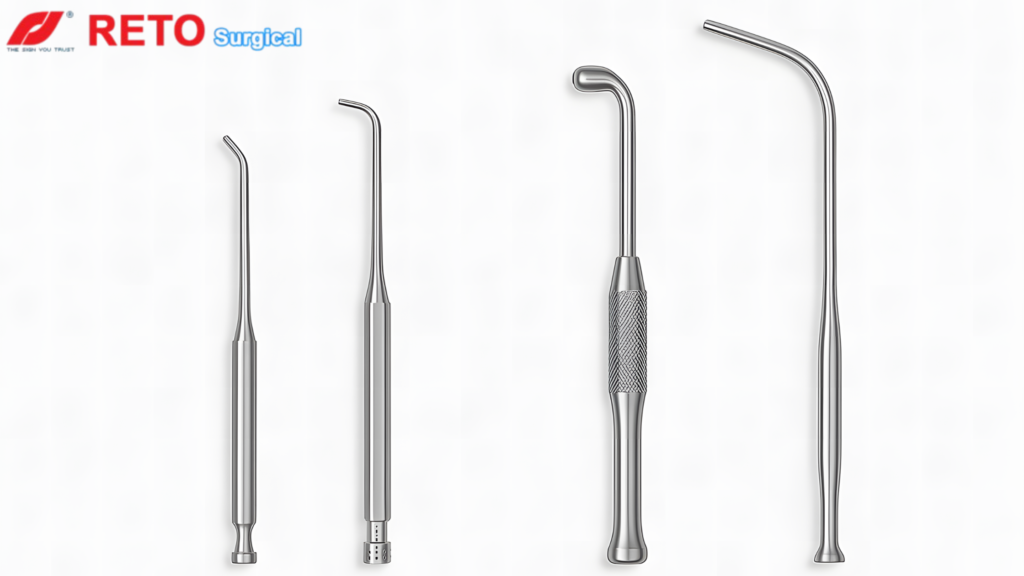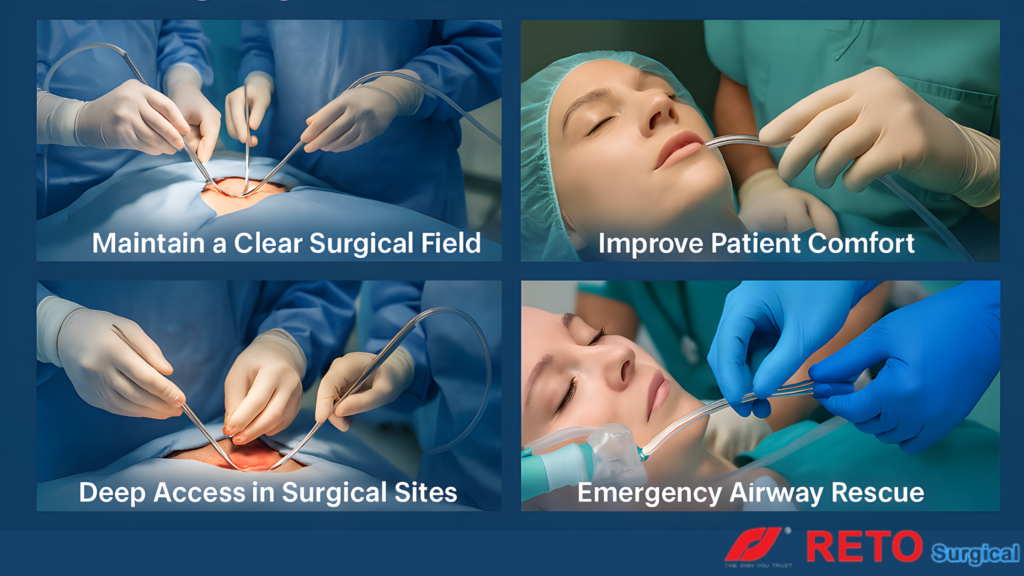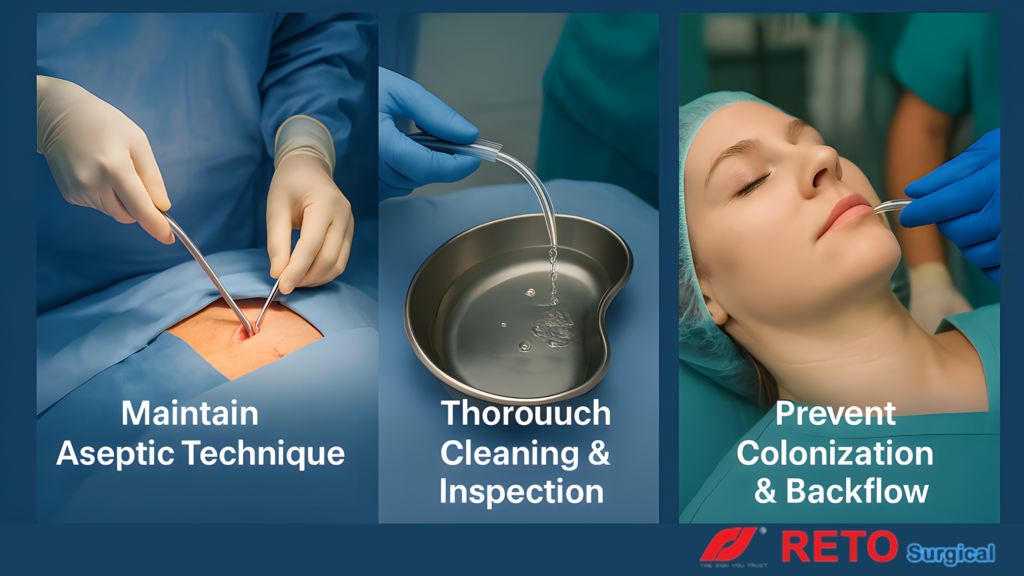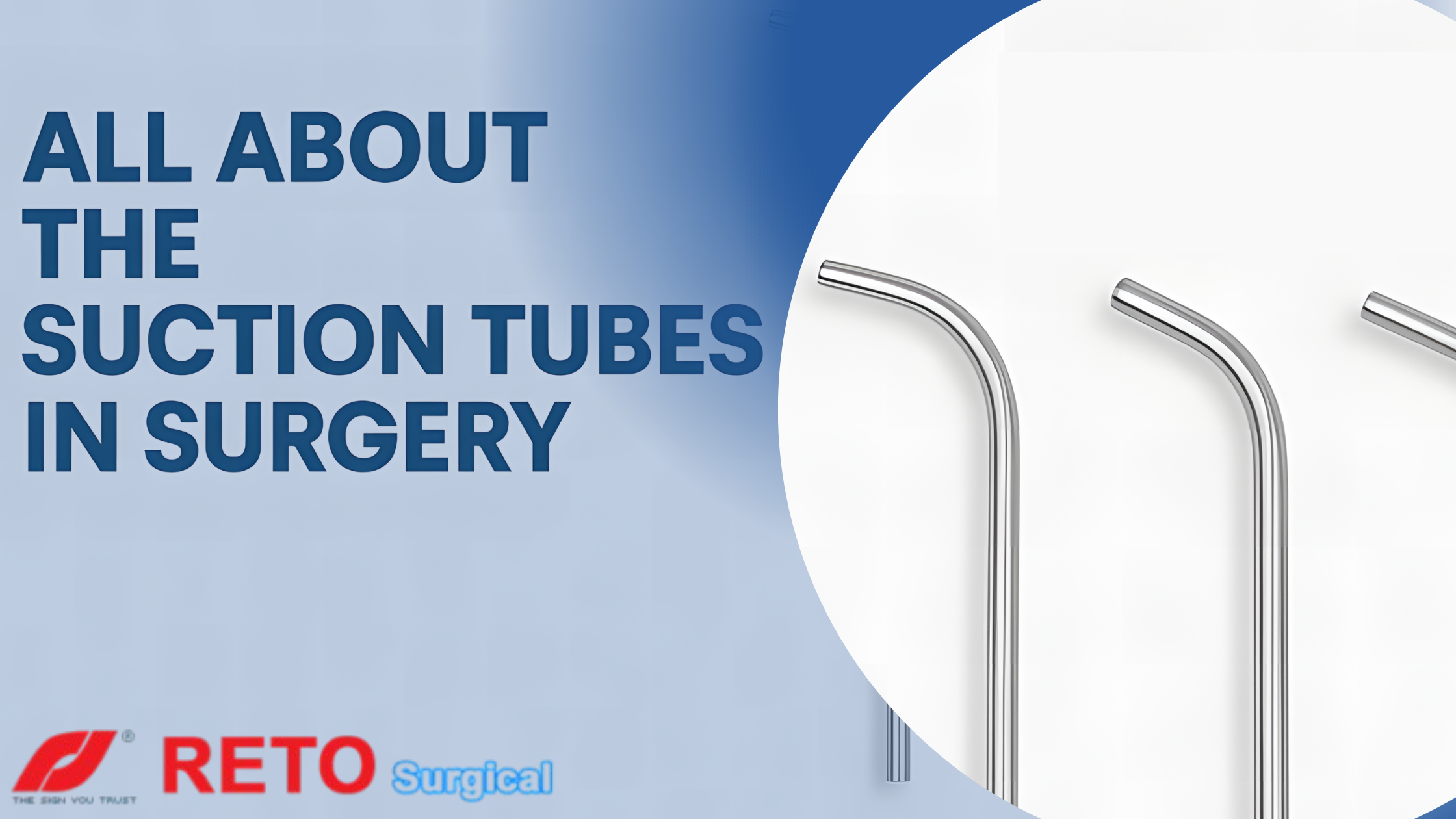All About the Suction Tubes in Surgery
Suction Tubes in Surgery: Types, Uses, and Best Practices
Surgical suction tubes, which are made to effectively remove blood, fluids, and debris from surgical sites, are essential equipment in modern operating rooms. These tools lower the risk of infection, enhance procedure results, and assist surgeons in retaining a clear field of vision. Yankauer, Poole, Frazier, and Rosen are common varieties of suction tubes; each is appropriate for a particular use depending on the surgical site and fluid volume. For example, Frazier suction tubes are perfect for delicate operations like neurosurgery, while Yankauer suction tubes are commonly used in general surgery.
Surgical accuracy is improved, and patient safety is guaranteed when these instruments are chosen and handled properly. The main sorts of suction tubes, their uses, and crucial best practices that all surgical teams should adhere to are described in this guide.
Different Types of Suction Tubes
Many different types of suction tubes can be used for various purposes. The following are some of the most popular varieties of suction tubes.

Adson Suction Tube
An Adson suction tube is used to remove blood, debris, residual particles, and other fluids from the surgical site. These suction tubes are used by neurosurgeons, general surgeons, and ENTs. By removing blood or other fluids, these suction tubes enhance the surgical field’s visibility. These are made of stainless steel and can be reused after sterilization.
Poole Suction Tube
Eugene Poole was responsible for creating the poole suction tube. For deep abdominal procedures or cesarean sections, a poole suction tube is utilized to remove any blood, debris, or pooled fluid. Blood and other fluids are cleaned from the surgical site with the use of this suction tube. Poole suction tubes are used for some surgical procedures.
Yankauer Suction Tube
This oral suction device enables efficient suction without damaging the surrounding tissues. The Yankauer Suction Tube is the most widely used suction worldwide. It is also possible to use this suction tube to clean surgical sites while performing surgery.
Ferguson-Frazier Suction Tubes
Ferguson-frayzier suction tubes remove fluid or debris from small, tight surgical areas. These angles are useful for cleaning surgical sites of additional fluid or debris. After sterilization, these stainless steel suction tubes can be re -used. The operation of the nose often involves the use of these suction tubes.
Uses of Suction Tubes in Surgery

Here are the uses of suction tubes in surgery mentioned below:-
- Maintain a Clear Surgical Field: During tooth extractions, root canals, and crown preparations, blood, saliva, coolant, and debris are removed using surgical aspirators and high-volume evacuators (HVE). This minimizes aerosol dispersal while guaranteeing visibility and accuracy.
- Improve Patient Comfort: Saliva ejectors control drooling and lessen the gag reaction by keeping the mouth dry. This reduces discomfort and anxiety during operations, such as when using sealants and fillings.
- Deep Access in Surgical Sites: Curved metal points like Frazier, which also allow for precise access in hard-to-reach places and evacuate blood or debris, can reach deep extraction sockets or surgical sites.
- Emergency Airway Rescue: In cases of allergic reactions or unexpected bleeding, providers employ suction to quickly remove vomit, blood, or foreign objects from the mouth or throat. By doing this, airway compromise is avoided.
Suction Tubes in Surgery Best Practices

Here are best practices for using suction tubes in surgery mentioned below:-
Maintain Aseptic Technique
For open suction, utilize sterile catheters and single-use tubing. To avoid wound or airway contamination, wash your hands, wear personal protective equipment, and use sterile techniques.
Thorough Cleaning & Inspection
Multi-part tubes (like Yankauer tubes) should be disassembled and cleaned with the appropriate brushes, the lumen checked with a borescope, and tubes with residue, kinks, or dents disposed of.
Prevent Colonization & Backflow
Think about on/off control and only apply suction when essential. Bacterial and viral filters and overflow prevention are used to stop backflow and the spread of aerosols.
Conclusion
For a number of operations, including as airway management, and operating room cleaning, surgical suction tubes are necessary. The highest level of patient safety requires careful tubing system selection, pressure management, controlled suction time with pre/post-oxygenation, strict aseptic protocols, and appropriate suction catheter sizing. Device failure and infection can be avoided with early replacement, routine cleaning, and examination (particularly for damage).
Overflow protection, disposable parts, and bacterial and virus filters all help to reduce contamination worries. These procedures, which follow international norms, JCI, and WHO guidelines, greatly lessen problems like tissue damage, hypoxia, and cross-infection. Surgical outcomes are often safer and more successful when they are incorporated into surgical safety checklists and team training.
FAQ’s
Q1. What is a suction tube used for in surgery?
Small devices that provide suction are commonly referred to as aspirators. To examine and operate on the area being operated on, surgeons can utilize suction to remove blood from the area. Additionally, following an intracranial haemorrhage, suction can be used to remove blood that has accumulated inside the skull.
Q2. What are the two main types of suction pumps?
Centrifugal pumps come in two types: single-suction pumps and double-suction pumps. Their number of suction inlets is the primary distinction between them. Double suction pumps have two suction inlets, while single suction pumps only have one.
Q3. What is a suction tube used for in surgery?
Frazier suction tubes remove debris and fluids from confined surgical sites, such as the nasal cavity, intracranial areas, and cervical and lumbar regions. A small hole controls the suction, and a thin wire runs through the tube to remove trapped tissue during aspiration.
Q4. How should Yankauer suction tubes be properly cleaned?
Remove the tip and remove it before cleaning. Use a nylon brush to clean the threads; use a long but appropriate-sized lumen brush to clean the interior. This is to clear the area while the operation is underway.
Q5. How many types of suction tube are there?
Types of suctioning catheters
Different catheters may be used for nasal, oral, nasopharyngeal and oropharyngeal suctioning: Tip catheters are used for nasal and oral suctioning. Little Suckers are used for nasal and oral suctioning. Yankauer catheter is used for oral suctioning.

